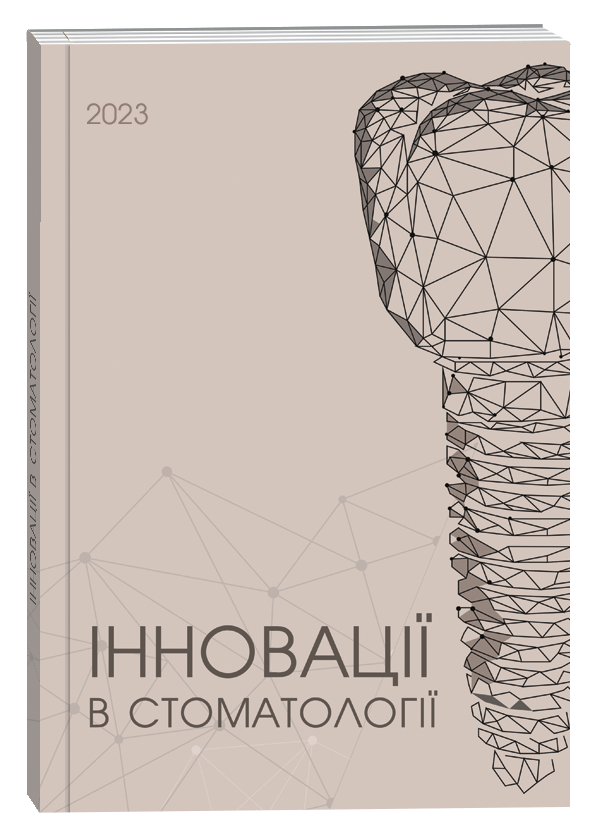MODERN APPROACHES TO THE PROSTHETIC TREATMENT OF PARTIAL EDENTULISM (LITERATURE REVIEW)
DOI:
https://doi.org/10.35220/2523-420X/2025.2.23Keywords:
partial edentulism, prosthetic treatment, removable dentures, implantology, quality of life, functional rehabilitationAbstract
Partial edentulism is one of the most common dental problems, which not only disrupts chewing function and aesthetics, but also significantly affects the quality of life of patients. Modern scientific research considers tooth loss not only as a clinical pathology, but as a complex phenomenon that has social, psychological and functional consequences. Studies emphasize the importance of individual perception of partial edentia: patients experience a deterioration in their self-esteem, reduced social activity, and decreased enjoyment of eating.Deterioration of orofacial functions (chewing, articulation, facial expression) with partial tooth loss leads to changes in eating behavior and even cognitive activity. Elderly people and people with concomitant systemic diseases such as Parkinson's disease or diabetes are particularly susceptible to this. In a demographic context, partial edentia has an uneven distribution. Studies conducted in different countries demonstrate a relationship between partial tooth loss and socioeconomic status, education, age, and gender. Such data generate a demand for a differentiated approach to orthopedic treatment, taking into account not only clinical but also social factors.Taking into account the above, orthopedic treatment of partial edentia should be considered not only as a technical replacement of lost teeth, but as an integrated medical, social, and functional strategy aimed at restoring the patient's full life. This necessitates a systematic analysis of modern approaches to treatment from the perspective of evidence-based medicine, biomechanics, implantology, and technologies of removable prosthetics for partial edentia. The aim of the study. Generalization of modern approaches to orthopedic treatment of partial edentulism based on the analysis of scientific publications. Materials and methods. An analysis of publications in the Scopus and PubMed databases was conducted using a combination of keywords: “partial edentulism”, “ prosthetic treatment”, “removable dentures”, “implantology”, “quality of life”, “functional rehabilitation”. Search criteria by year – 2017–2025. Journals and dissertations devoted to issues of clinical dentistry, orthopedic dentistry, and social medicine were processed to find relevant publications.
References
Suwanarpa, K., Hasegawa, Y., Paphangkorakit, J., Pitiphat, W., Hori, K., & Ono, T. (2024). Development of the food acceptance questionnaire for Thai partial and complete edentulism. Nutrients, 16(10). https://doi.org/10.3390/nu16101432
Olivieri, Q., Maniewicz, S., Chebib, N., Mojon, P., & Müller, F. (2025). The preferred chewing side in partially edentulous patients is more related to residual dentition than hemispheric laterality. Journal of Oral Rehabilitation. https://doi.org/10.1111/joor.13955
Corsalini, M., Rapone, B., Cagnetta, G., Carossa, M., Sportelli, P., De Giacomo, A., Laforgia, A., & Di Venere, D. (2020). Orofacial functions and chewing efficiency in elderly patients with Parkinson’s disease rehabilitated with removable prostheses. Open Dentistry Journal, 14(1), 13–18. https://doi.org/10.2174/1874210602014010013
Berard, A., & Zhou, C. (2024). Cognitive decline and dental function: A bidirectional relationship. International Journal of Geriatric Psychiatry, 39(2), 187–194. https://doi.org/10.1080/19424396.2023.2289696
Al-Angari, S. S., AlShamrani, A. S., Alhamdan, R. S., Aldosari, H. S., & AlSwayyed, S. A. (2021). Patterns of partial edentulism in the Riyadh population. The Saudi Dental Journal, 33(2), 88–93. https://doi.org/10.1016/j.sdentj.2020.05.002
Gopal, V., & Subhashree, R. (2020). Gender variation in Kennedy’s classification among edentulous patients. Indian Journal of Forensic Medicine & Toxicology, 14(4), 1265–1270. https://doi.org/10.37506/ijfmt.v14i4.12489
Refaat, M. M., Al-Shareeda, N. A., & Hussain, A. M. (2020). The incidence of different removable partial denture cases related to age, gender and arch in a distinct population in Iraq. Annals of Tropical Medicine and Public Health, 23(13), Article 231345. https://doi.org/10.36295/ ASRO.2020.231345
Baig, M. R., Akbar, J. H., Qudeimat, M., & Omar, R. (2018). Effects of impression material, impression tray type, and type of partial edentulism on the fit of cobalt- chromium partial denture frameworks on initial clinical insertion: A retrospective clinical evaluation. International Journal of Prosthodontics, 31(2), 120–123. https://doi.org/10.11607/ijp.5495
Baig, M. R., Qudeimat, M., & Omar, R. (2019). Assessment of factors affecting partial removable dental prostheses framework fit: A clinical prospective study. International Journal of Prosthodontics, 32(6), 497–502. https://doi.org/10.11607/ijp.6240
Benyahia, H., El Benaissi, A., Bahij, L., Merzouk, N., & Regragui, A. (2023). Impression techniques in removable partial denture: Epidemiological study. Tunisie Medicale, 101(1), 41–46.
Menini, M., Dellepiane, E., Deiana, T., Fulcheri, E., Pera, P., & Pesce, P. (2022). Comparison of bone-level and tissue-level implants: A pilot study with a histologic analysis and a 4-year follow-up. International Journal of Periodontics and Restorative Dentistry, 42(4), 535–543. https://doi.org/10.11607/prd.4990
Fridenberg, N., Tagger-Green, N., Katz, M., & Levartovsky, S. (2025). Assessment of complications in adjacent natural teeth compared to contralateral teeth in single posterior implant cases. Scientific Reports, 15(1), Article 2136. https://doi.org/10.1038/s41598-025-86076-x
Hadzik, J., Kubasiewicz-Ross, P., Nawrot-Hadzik, I., Gedrange, T., Pitulaj, A., & Dominiak, M. (2021). Short (6 mm) and regular dental implants in the posterior maxilla: 7-years follow-up study. Journal of Clinical Medicine, 10(5), Article 940. https://doi.org/10.3390/jcm10050940
Pardo-Zamora, G., Ortiz-Ruíz, A. J., Camacho- Alonso, F., Martínez-Marco, J. F., Molina-González, J. M., Piqué-Clusella, N., & Vicente-Hernández, A. (2021). Short dental implants (≤8.5 mm) versus standard dental implants (≥10 mm): A one-year post-loading prospective observational study. International Journal of Environmental Research and Public Health, 18(11), Article 5683. https://doi.org/10.3390/ijerph18115683
Mozaffari, A., Ghaffari, A., Nikbin, M., & Mobini, M. (2019). Age-related alteration in the lateral wall thickness of the maxillary sinus in partially or completely edentulous posterior maxilla: A cone-beam computed tomography study. Dental Hypotheses, 10(4), 91–96. https://doi.org/10.4103/denthyp.denthyp_16_19
Zhou, Z., & Lin, C. (2020). Satisfaction with digital vs conventional removable partial dentures: A randomized trial. Prosthetics and Orthotics International, 44(6), 405–412. https://doi.org/10.1007/s00784-021-03827-6
Sathasivasubramanian, S., Venkatasai, P. M., Divyambika, C. V., Mandava, R., Jeffrey, R., Jabeen, N. A. N., & Kumar, S. S. (2017). Masseter muscle thickness in unilateral partial edentulism: An ultrasonographic study. Journal of Clinical Imaging Science, 7(1), Article 44. https://doi.org/10.4103/jcis.jcis_50_17








